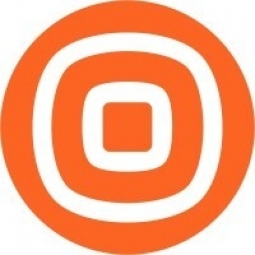Download PDF
Strava Beacon: Enhancing Athlete Safety with SMS Integration
Technology Category
- Platform as a Service (PaaS) - Device Management Platforms
- Sensors - GPS
Applicable Industries
- Electronics
- Telecommunications
Use Cases
- Onsite Human Safety Management
- Time Sensitive Networking
Services
- System Integration
The Challenge
Strava, a leading app for recreational and professional athletes, introduced a feature called Beacon that allows athletes to send a text message to up to three safety contacts, providing a live GPS-tracked map of their run or ride. While this feature was easy to use for athletes who carried their phones, it posed a challenge for those who used wearable devices like Garmin watches or bike computers linked to Strava. These devices were not designed to send text messages, yet they constituted over 40% of Strava's user base. Additionally, Strava needed to ensure that Beacon worked globally, as their community of athletes is spread across the world. The challenge was to find a way to send SMS from wearable devices and ensure that the SMS could be sent to and from anywhere in the world.
About The Customer
Strava is a leading app for recreational and professional cyclists and runners, allowing them to track their progress and connect with a global community of athletes. The app is built around the idea of good-natured competition and is used by tens of millions of athletes worldwide. Strava not only helps athletes track their progress, but also ensures their safety during their activities. A significant segment of Strava's users are athletes who use wearable devices like watches or ride computers linked to the app.
The Solution
Strava collaborated with Infobip to integrate their omnichannel communications API into the app. This allowed athletes to set their three contacts and simply press start on their fitness device, with the app and Infobip’s API taking care of the rest. The solution ensured that the SMS could be sent to and from anywhere in the world, and that it came from the same phone number every time, making it recognizable to family members. This was achieved using intelligent number pooling built into the Infobip omni channel communications API. The solution consolidated all requirements into one company, simplifying development time and resources.
Operational Impact
Quantitative Benefit
Related Case Studies.

Case Study
Remote Temperature Monitoring of Perishable Goods Saves Money
RMONI was facing temperature monitoring challenges in a cold chain business. A cold chain must be established and maintained to ensure goods have been properly refrigerated during every step of the process, making temperature monitoring a critical business function. Manual registration practice can be very costly, labor intensive and prone to mistakes.

Case Study
Cloud Solution for Energy Management Platform-Schneider Electric
Schneider Electric required a cloud solution for its energy management platform to manage high computational operations, which were essential for catering to client requirements. As the business involves storage and analysis of huge amounts of data, the company also needed a convenient and scalable storage solution to facilitate operations efficiently.

Case Study
Leveraging the IoT to Gain a Competitive Edge in International Competition
Many large manufacturers in and outside Japan are competing for larger market share in the same space, expecting a growing demand for projectors in the areas of entertainment, which requires glamor and strong visual performance as well as digital signage that can attract people’s attention. “It is becoming more and more difficult to differentiate ourselves with stand-alone hardware products,” says Kazuyuki Kitagawa, Director of Service & Support at Panasonic AVC Networks. “In order for Panasonic to grow market share and overall business, it is essential for us to develop solutions that deliver significant added value.” Panasonic believes projection failure and quality deterioration should never happen. This is what and has driven them to make their projectors IoT-enabled. More specifically, Panasonic has developed a system that collects data from projectors, visualizes detailed operational statuses, and predicts issues and address them before failure occurs. Their projectors are embedded with a variety of sensors that measure power supply, voltage, video input/ output signals, intake/exhaust air temperatures, cooling fan operations, and light bulb operating time. These sensors have been used to make the projector more intelligent, automatically suspending operation when the temperature rises excessively, and automatically switching light bulbs. Although this was a great first step, Panasonic projectors were still not equipped with any capability to send the data over a network.








